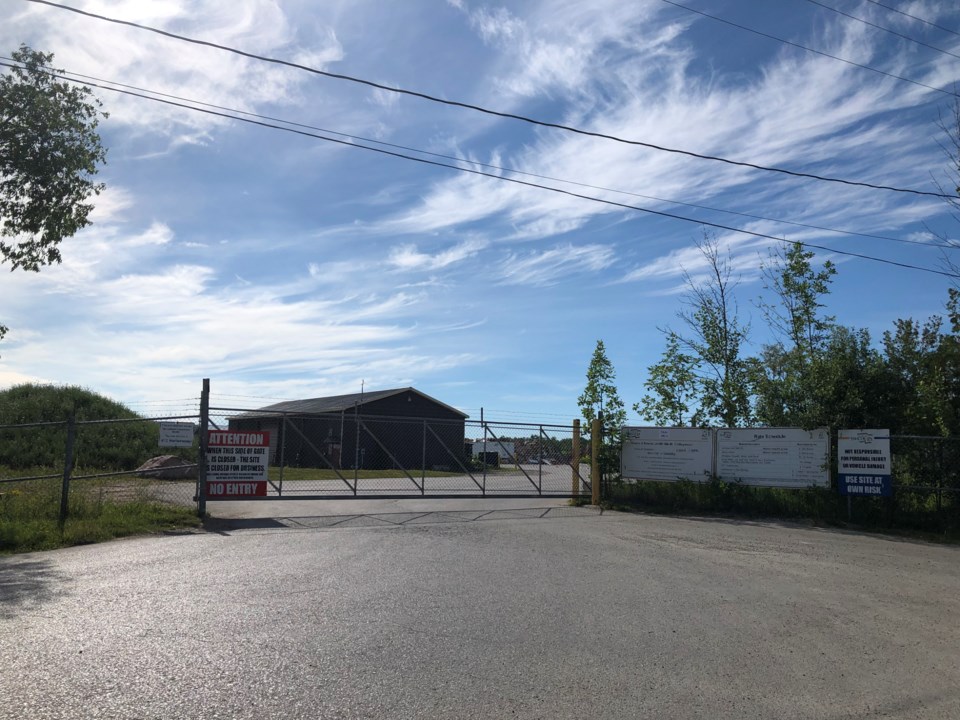With just weeks left in the remaining lifecycle of the Collingwood landfill, more of the area's waste will be transferred elsewhere.
The landfill at the Collingwood waste transfer station has been filling up and was slated to close in 2023.
“In fact, the landfill portion of the site hasn’t closed yet, we snuck a couple of more months out of it,” says Rob McCullough, Simcoe County’s director of solid waste management.
County officials say the service to residents and businesses, however, will remain the same. Users aren’t expected to see any difference as it will be the landfill closing, not the transfer station that residents access to drop off waste.
But the question remains: Is there room to reduce the amount of waste that has to hauled somewhere else, bringing down related costs and giving the environment a bit of a break?
McCullough said there's room to reduce the amount of waste that has to be hauled somewhere else. Doing so would not only bring down the costs to the taxpayers, but also be better for the environment.
“When we weigh up the different material in the garbage (collected curbside) – 47 per cent is organic” he explains. “What we want to do is remove as much as we can of organics from the garbage stream.”
The portion of actual garbage that is put out on the curb as trash is 29 per cent, the remaining 71 per cent is material that can be diverted – the vast majority of which is organics.
If more of the organic material is removed, he reasons, not only will costs go down, but so too will the methane released into the atmosphere when organics are added to the landfill. Organics are also useful on their own as a fertilization source.
McCullough’s department regularly takes on the unenviable task of a waste audit of 100 representative units collected over an eight-week period. That involves going through samples of garbage with tweezers to determine what kind of material is thrown out. That's how he knows almost half the garbage put on the curb is organic waste that could go in the green organics collection cart.
That leads him to the conclusion that there’s room for diversion efforts to reduce the amount of organic material going to the landfill.
On the recycling side, however, the county scores high – usually among the province’s top recycling municipalities. But even there, he sees opportunity for improvement. If 90 per cent of the population recycles blue box material and 90 per cent of them do it right, the end result is an 80 per cent recycling rate, he reckons, concluding there remains some opportunity for improvement.
He expects some help on that front. Come January 2026 Ontario producers of the related material will be responsible for that stream of waste. He sees opportunity at that point for provincewide advertising to encourage more recycling and related instructions. With that provincewide consistency, there will be no mixed messages on what can be recycled and what cannot. Currently, municipalities don’t all recycle the same material.
As for dumps in Simcoe County, well that’s all winding down. With Collingwood’s landfill set to accept its last bit of garbage in June, the county will have just two dumps remaining.
The county’s 2023 Solid Waste Data Summary presented to the committee of the whole at the end of February showed that, at that time, the remaining capacity at the Collingwood landfill was 9,215 cubic metres.
The Nottawa landfill, which is expected to soon reach capacity as well, has remaining capacity of 19,575 cubic metres. The third landfill, in Oro-Medonte Township, will remain in operation until about mid-2027 with its capacity at 203,290 at the time of the report.
In 2023, the county’s waste collection crews picked up about 109,135 tonnes of waste material (garbage, organics, recyclables, and seasonal collections). Another 55,421 tonnes of total waste was dropped off at facilities bringing the total tonnage of waste collected to 164,556 with 65 per cent of that, or 106,985 tonnes, diverted.
Simcoe County has no plans to site new locations, at least for now. Earlier efforts to create a new site were abandoned following vociferous objection and controversy, so the decision was made to use transfer stations to move garbage elsewhere, similar to approaches adopted by other municipalities.
The county has entered into a new agreement with a Barrie-based company. The county’s waste is transported to Barrie where the company then transfers it to partners with which it has agreements. That could be anywhere, says McCullough, but most of Ontario’s commercial garbage is taken into the United States.
Diversion, meanwhile, remains a focus.
“We really need to put all of our efforts into diversion from landfill,” McCullough says.



